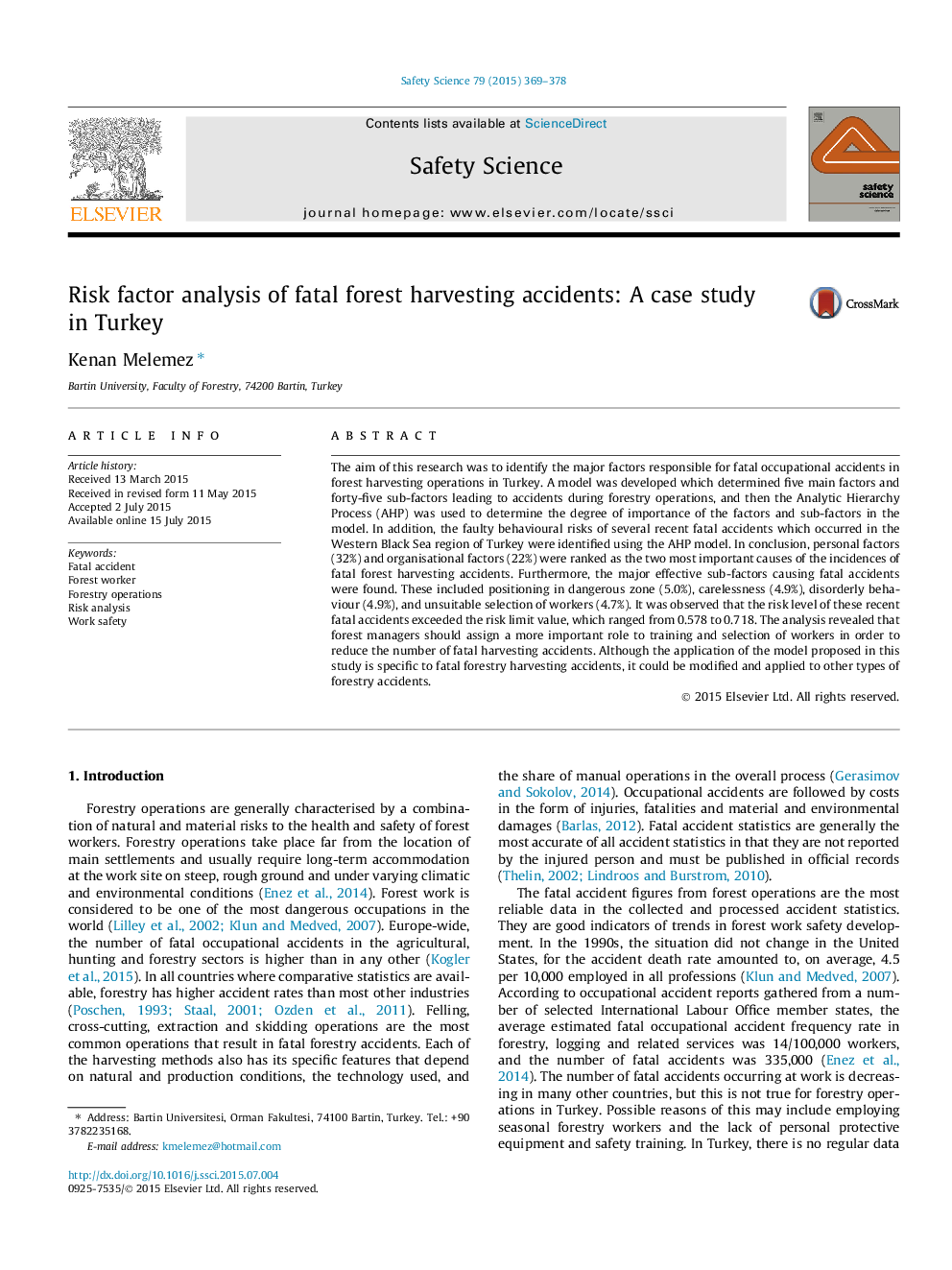| Article ID | Journal | Published Year | Pages | File Type |
|---|---|---|---|---|
| 6975716 | Safety Science | 2015 | 10 Pages |
Abstract
The aim of this research was to identify the major factors responsible for fatal occupational accidents in forest harvesting operations in Turkey. A model was developed which determined five main factors and forty-five sub-factors leading to accidents during forestry operations, and then the Analytic Hierarchy Process (AHP) was used to determine the degree of importance of the factors and sub-factors in the model. In addition, the faulty behavioural risks of several recent fatal accidents which occurred in the Western Black Sea region of Turkey were identified using the AHP model. In conclusion, personal factors (32%) and organisational factors (22%) were ranked as the two most important causes of the incidences of fatal forest harvesting accidents. Furthermore, the major effective sub-factors causing fatal accidents were found. These included positioning in dangerous zone (5.0%), carelessness (4.9%), disorderly behaviour (4.9%), and unsuitable selection of workers (4.7%). It was observed that the risk level of these recent fatal accidents exceeded the risk limit value, which ranged from 0.578 to 0.718. The analysis revealed that forest managers should assign a more important role to training and selection of workers in order to reduce the number of fatal harvesting accidents. Although the application of the model proposed in this study is specific to fatal forestry harvesting accidents, it could be modified and applied to other types of forestry accidents.
Related Topics
Physical Sciences and Engineering
Chemical Engineering
Chemical Health and Safety
Authors
Kenan Melemez,
